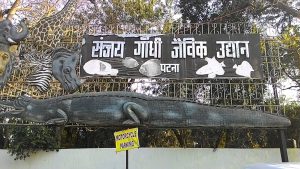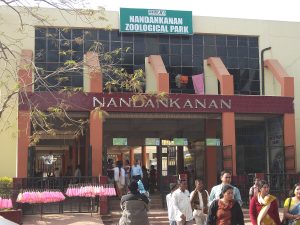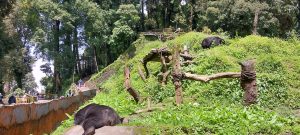Mysore Zoo: A Wildlife Haven in the Heart of Karnataka Mysore Zoo, officially known as the Sri Chamarajendra Zoological Gardens, […]

Indian Tourism

A Timeless Symphony in Stone

Indian Tourism
Heritage in India
India’s heritage is a rich blend of cultural, architectural, and historical elements. Notable architectural wonders include the Taj Mahal and the forts of Rajasthan. India’s diverse cultural tapestry is reflected in its languages, festivals, and classical dance forms like Bharatanatyam and Kathak. Historical sites such as Varanasi and the ruins of Hampi offer glimpses into its past, while traditional crafts like handwoven sarees and intricate jewelry highlight exceptional craftsmanship. Preservation efforts by the Archaeological Survey of India and various cultural organizations are crucial for maintaining and celebrating this rich heritage for future generations.
India’s heritage is a tapestry of diverse cultural, architectural, and historical elements that span thousands of years. This rich heritage is reflected in its monuments, traditions, languages, and art forms.
Architectural Marvels
India boasts a vast array of architectural wonders, including ancient temples, forts, and palaces. The Taj Mahal in Agra, a UNESCO World Heritage Site, is a globally recognized symbol of love and an architectural masterpiece of Mughal architecture. The Red Fort in Delhi and the Qutub Minar are notable examples of Mughal grandeur, while the intricate temples of Khajuraho and the rock-cut caves of Ajanta and Ellora reflect the artistic brilliance of ancient India.
Cultural Diversity
India’s cultural heritage is marked by its linguistic and ethnic diversity. With 22 officially recognized languages and numerous dialects, India’s linguistic landscape is as varied as its cultural practices. Each region has its own unique festivals, dances, music, and crafts. The classical dance forms of Bharatanatyam, Kathak, Odissi, and Kuchipudi highlight the country’s rich performing arts tradition.
Historical Sites
India’s history is etched into its landscape through a myriad of historical sites. The ancient city of Varanasi, the ruins of Hampi, and the fortresses of Rajasthan offer glimpses into the country’s past. The British colonial architecture in cities like Mumbai and Kolkata adds another layer to India’s historical narrative.
Craftsmanship and Art
Traditional Indian crafts, such as textiles, pottery, and metalwork, showcase exceptional craftsmanship. Handwoven sarees, intricate jewelry, and vibrant paintings are integral to India’s artisanal heritage.
Preservation Efforts
Efforts to preserve India’s heritage include initiatives by the Archaeological Survey of India (ASI) and various cultural organizations. These efforts aim to maintain and restore historical sites, promote traditional arts, and ensure the transmission of cultural practices to future generations.
India’s heritage is a vibrant blend of the ancient and the contemporary, reflecting its complex history and cultural richness.



Best Time for Heritage Tourism in India: Discovering History Year-Round
India, with its rich tapestry of history and culture, is a treasure trove for heritage travelers. From ancient temples and grand palaces to historic forts and UNESCO World Heritage sites, the country offers an immersive experience into its diverse cultural heritage. Choosing the right time to explore these sites can significantly enhance your travel experience.
October to March: The best time for heritage tourism in India is from October to March. During these months, the weather is generally cooler and more pleasant, making it ideal for exploring outdoor sites. This period is perfect for visiting the architectural marvels of Rajasthan, such as the forts and palaces in Jaipur, Jodhpur, and Udaipur, as well as the iconic Taj Mahal in Agra. The winter months also offer a comfortable climate for exploring the temples of South India, including those in Tamil Nadu and Karnataka.
November to February: The peak tourist season, from November to February, is particularly favorable for heritage tours. The cooler weather is ideal for visiting historical cities like Delhi, Varanasi, and Khajuraho. Festivals such as Diwali, Holi, and Makar Sankranti also fall during this time, providing a unique opportunity to experience India’s vibrant cultural heritage in full swing.
April to June: While the summer months from April to June can be hot, they are still suitable for visiting hill stations and cooler regions like Himachal Pradesh and Ladakh, where you can explore Buddhist monasteries and colonial-era architecture. The summer heat can be intense in many parts of India, so early morning or late afternoon visits are recommended.
July to September: The monsoon season, from July to September, brings lush greenery to many heritage sites, particularly in the southern and western parts of the country. While some regions experience heavy rainfall, this time can offer a quieter, more serene experience of popular sites with fewer crowds.
In summary, the period from October to March is the best time for heritage tourism in India, with November to February being ideal for comfortable exploration and festival experiences.
States
- Andaman and Nicobar
- Andhra Pradesh
- Arunachal Pradesh
- Assam
- Bihar
- Chandigarh
- Chhatisgarh
- Dadar & Nagar
- Daman & Diu
- Delhi
- Goa
- Gujarat
- Haryana
- Himachal Pradesh
- jammu & Kashmir
- Jharkhand
- Karnataka
- Kerala
- Lakshadweep
- Madhya Pradesh
- Maharashtra
- Manipur
- Meghalaya
- Mizoram
- Nagaland
- Orissa
- Pondicherry
- Punjab
- Rajasthan
- Sikkim
- Tamil Nadu
- Tripura
- Uttar Pradesh
- Uttarakhand
- Uttaranchal
- West Bengal

Mysore Zoo: A Wildlife Haven in the Heart of Karnataka

Bannerghatta Biological Park, Bangalore
Bannerghatta Biological Park, Bangalore: A Wildlife Adventure Near the City Bannerghatta Biological Park (BBP), located around 22 kilometers from Bangalore, […]

Saramsa Garden Zoo, Gangtok
Saramsa Garden Zoo, Gangtok: A Botanical Haven with a Touch of Wildlife Saramsa Garden Zoo, located near Ranipool, about 14 […]

Aizawl Zoo, Mizoram: A Serene Haven for Wildlife Enthusiasts
Aizawl Zoo, Mizoram: A Serene Haven for Wildlife Enthusiasts Located in the picturesque hills of Aizawl, the capital city of […]

Manipur Zoological Park, Iroisemba
Manipur Zoological Park, Iroisemba: A Hidden Gem of Biodiversity Manipur Zoological Park, located in Iroisemba, about 10 kilometers from the […]

Sepahijala Wildlife Sanctuary, Tripura
Sepahijala Wildlife Sanctuary, Tripura: A Biodiversity Haven Sepahijala Wildlife Sanctuary, located in the lush and verdant landscapes of Tripura, is […]

Kohima Zoo, Nagaland
Kohima Zoo, Nagaland: A Natural Haven for Wildlife Enthusiasts Nestled in the lush hills of Kohima, the capital of Nagaland, […]

Shillong Zoo, Meghalaya
Shillong Zoo, Meghalaya: Nature’s Paradise in the Abode of Clouds Nestled in the picturesque city of Shillong, Meghalaya, the Shillong […]

Guwahati Zoo (Assam State Zoo), Guwahati, Assam
Guwahati Zoo (Assam State Zoo), Guwahati, Assam: A Wildlife Haven in the Heart of Northeast India The Assam State Zoo […]

Patna Zoo (Sanjay Gandhi Jaivik Udyan), Patna, Bihar
Patna Zoo (Sanjay Gandhi Jaivik Udyan), Patna, Bihar: A Haven of Biodiversity Sanjay Gandhi Jaivik Udyan, popularly known as Patna […]

Nandankanan Zoological Park, Bhubaneswar
Nandankanan Zoological Park, Bhubaneswar: Odisha’s Premier Wildlife Destination Nandankanan Zoological Park, located in Bhubaneswar, Odisha, is one of India’s most […]

Padmaja Naidu Himalayan Zoological Park (Darjeeling), West Bengal
Padmaja Naidu Himalayan Zoological Park (Darjeeling), West Bengal: A Unique Conservation Haven Nestled in the serene hills of Darjeeling, West […]
